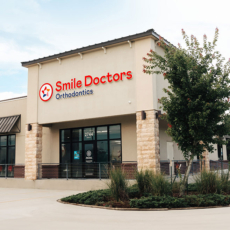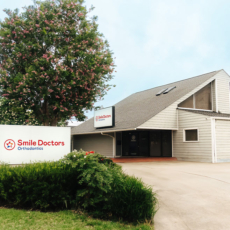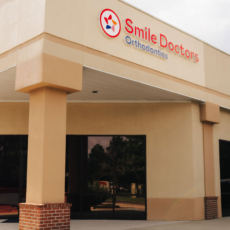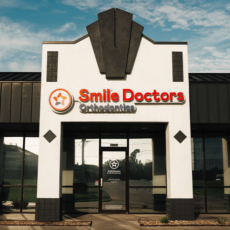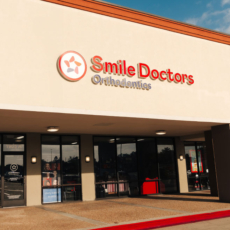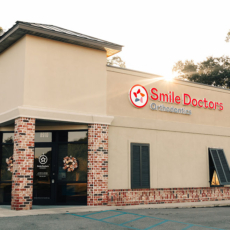Frequently Asked Questions
A few of the questions you may have been wondering about, along with their answers—and maybe a couple of bits you didn’t realize you needed—it’s all here. And if we didn’t cover something that’s on your mind, please give us a call!
Braces FAQ
No, we provide options. We want you to have options in your orthodontic treatment, so our doctors offer clear braces, self-ligating braces, and clear aligners – a form of invisible braces.
When you begin treatment, you’ll need to take special care to avoid any foods that could damage your new appliances. We recommend you choose soft foods to eat with braces at school or work, including any of the following:
- Dairy – soft cheese, yogurt, pudding, milk-based drinks
- Breads – soft tortillas, pancakes, muffins without nuts
- Grains – pasta, soft-cooked rice
- Meats/Poultry – soft-cooked chicken, meatballs, lunch meats
- Seafood – tuna, salmon, crab cakes
- Vegetables – mashed potatoes, steamed spinach, beans
- Fruits – bananas, apple sauce,
- Treats – ice cream without nuts, milkshakes, gelatin, soft cake
Let common sense be your guide to help prevent damage to the brackets or prevent food particles from becoming trapped between brackets and wires. If it seems like a bad idea to eat it while in your braces, you probably shouldn’t eat it. In general, that means avoiding:
- Chewy foods such as fruit leathers, beef jerky, or bagels
- Highly crunchy foods like raw carrots, chips, raw celery, and popcorn
- Sticky foods like caramel candy, licorice, and marshmallows
- Very hard foods like hard candy, hard breadsticks, or pizza crust
- Any food you have to bite into such as apples or corn on the cob — though you can still enjoy these foods by slicing into smaller bites or removing the corn from the cob.
It may feel like you’ll be avoiding some of your favorite foods for a long time while you’re in treatment, but we promise 1) it’s the best way to avoid the inconvenience of an extra trip to our office, and 2) it will all be worth it every time you see that new, more confident smile of yours!
It takes some adjustment, but brushing with braces is easy to pick up quickly. Plan on taking a little longer than you’re used to at first but keep at it. You’ll be a pro in no time!
- Before brushing, rinse with water to dislodge food particles.
- Start brushing at the gum line, and hold your brush at a 45-degree angle. Brush both the top and the bottom, making sure the you scrub your gums and under the wires/around the brackets.
- Follow up with thorough flossing. You will need to use a precise and careful flossing technique to make sure you do not dislodge or loosen the brackets or wires. It takes a little practice, but we’ll get you started on the right foot when you start treatment.
We recommend using an electric toothbrush such as Sonicare or OralB. If you do not decide to use an electric toothbrush, use a toothbrush with soft bristles.
Generally, braces do not hurt. However, you may feel a little sore or uncomfortable immediately after you first get them. This soreness is normal, and it will not last long. A saltwater rinse can help relieve soreness and inflammation. Dissolve a single teaspoon of salt in a full cup of lukewarm water and swish it around your mouth for a few minutes. If soreness persists, you can take an over-the-counter pain reliever such as ibuprofen or Tylenol. If you experience lip, cheek, or tongue irritation in the weeks after getting braces, some wax can alleviate the problem quickly.
Since we customize braces treatment to your unique smile, treatment time varies, depending on several variables and is personalized for patients across the Northshore, Southshore, and Mississippi Gulf Coast areas, such as:
- The severity of your bite problem, if applicable
- Your age and growth stage
- How your teeth respond to treatment
- Your overall oral health, and more
That said, most patients need to wear braces for 12 to 24 months, which may be shorter or longer depending on your case. Initially, we’ll discuss this with you and give you an idea of what you can expect, and then after you’ve been in treatment for a while, we can see how your’re responding to the treatment, giving us an even better idea of how long treatment will last.
The cost of braces depends on which type of braces you choose, how long you will need treatment, and any other factors that might be unique to your treatment plan. Our treatment coordinators offer payment plans that can work with your budget and get you the orthodontic care that you need.
Yes. Generally, there is no reason you cannot return to school or work the same day.
Yes, you can still play sports with braces. It’s highly recommended that you wear a mouthguard to protect your teeth and your appliances. Please ask your doctor about mouthguard options.
No matter how old you are, the answer is no. There is no age limit for braces and our doctors provide braces for children, teens, and adults. Modern adult braces are more discreet, more comfortable, and more effective. More adults are choosing orthodontic treatment now more than ever before.
Don’t panic if your teeth begin to feel a little loose. This is a normal part of the treatment process. Your braces must first loosen your teeth to move them into the right position. Once your teeth have been repositioned, they will stabilize and no longer feel loose.
Invisalign® aligners FAQ
We find that clear aligners are most effective when worn 22+ hours per day and removed only for eating, brushing, and flossing, so they can’t only be worn while sleeping.
Always rinse your aligners as soon as they are removed from your mouth. It is recommended that you soak your aligner trays with the Invisalign brand crystal cleaning solution every day. This solution removes the bacteria from the aligners. Use a soft bristle toothbrush (not your toothbrush that you use daily) to lightly sweep away any debris that remains after the soak. After soaking, rinse off the aligners and place them back in your mouth.
This varies according to your treatment plan. Generally, aligners work for two weeks and are exchanged for the next set. In some cases, aligners may be worn for as little as a week before they’re switched out. This will depend on your specific treatment plan.
Invisalign aligners are a popular choice because of many benefits:
- Clear aligners for a more aesthetic appearance
- Comfortable as it is custom-made to fit your bite
- Affordable (about the same price as traditional metal braces)
- Faster treatment
- Less time spent at the orthodontist
- No restrictions on food
- You can carry out your oral hygiene routine much easier than with the traditional brackets and wires
Our doctors offer Invisalign® for teens which is suited for patients aged 12-18 years old. For adults, we offer Smile Express™ at-home aligners and Invisalign aligners for full comprehensive treatment.
General orthodontic FAQ
The American Association of Orthodontists recommends an orthodontic consultation at the age of 7. By this age, most children have several permanent teeth starting to surface allowing our doctors to effectively evaluate a child’s orthodontic condition. In certain cases, early evaluation allows our doctors to identify missing permanent teeth or jaw growth and habit problems that can be easily corrected if caught early. Our Rising Star program helps children avoid future problems and potential costly corrections.
Yes. We understand your busy schedule, and we are happy to help make the most of your time. On some occasions, we may request to speak with you when you return, so we ask you to check in with our concierges before dropping off your child. You can also schedule any remote care treatment check-ups by using the Smile Doctors Anywhere app.
Our doctors love dental referrals, but the dentist does not need to make an appointment. Most patients call us directly and mention the dentist who referred them. We always love to send a thank you note to our dentists.
The cost of braces or Invisalign aligners depends on the length of treatment and the type of braces and aligners that you choose. Our doctors and treatment coordinators are happy to come up with a payment plan that meets your budget.

